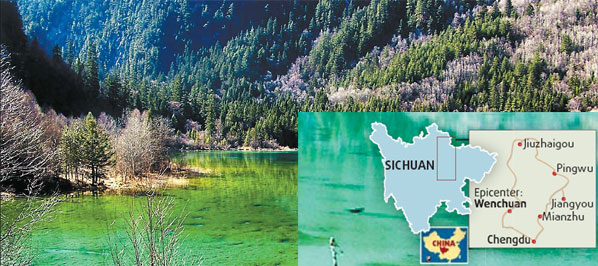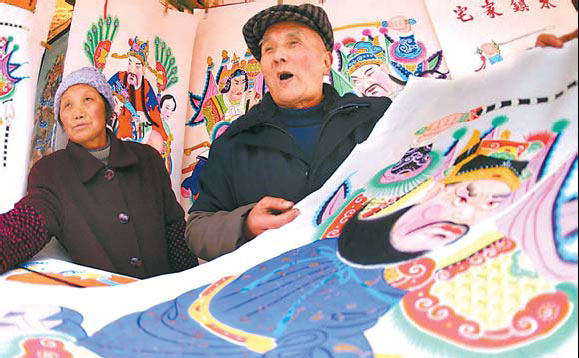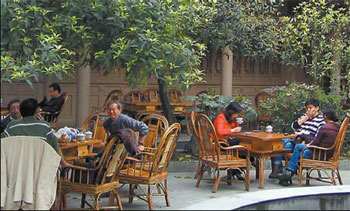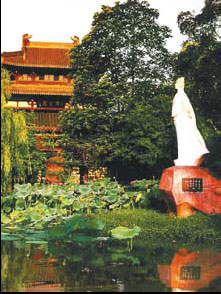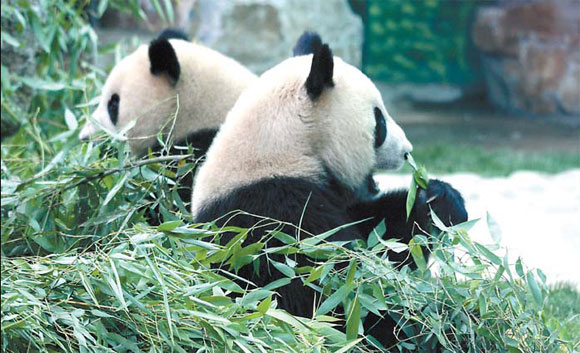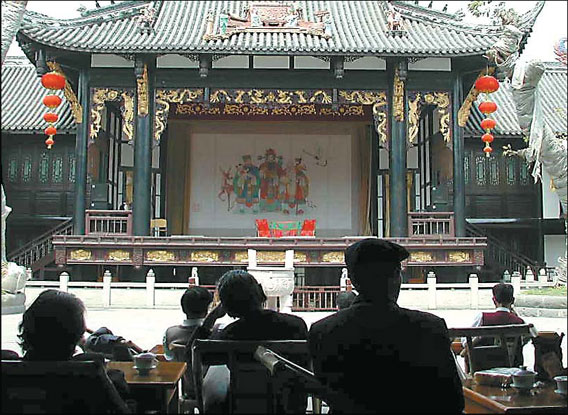Rebuild a scenic route on tourism
|
The watery wonderland of Jiuzhaigou teems with clear blue lakes and emerald pools. Li Jin |
A 1,000-km semi-circular scenic route has evolved from the northeast and northwest paths leading to the Jiuzhaigou World Heritage site from Chengdu, capital of Sichuan province.
This bow-shaped road and its backdrop of picturesque mountains, meandering rivers and fascinating historical relics attract millions of domestic and international tourists annually. It has consequently also been a source of supplementary subsistence to poverty stricken residents of the mountain villages along it.
|
A folk artist shows one of his New Year paintings at a local fair in Mianzhu. Shao Xing |
As a Sichuan native, every time I take the long-haul coach journey from Chengdu to my mountainous hometown in Tongjiang county, the eight-hour drive along broad expressways and over remote, rudimentary roads through scenic hills, valleys and rivers seems truly luxurious after months at a time of hustling urban life.
The devastating quake of May 12 in my picturesque provincial home, which has more world heritage sites than any other part of China, however, left me shocked, saddened and heavy hearted.
|
Teahouses are popular with locals of all ages in Chengdu. Chen Liang |
Aftershocks of the quake (now estimated to have killed about 70,000) along the route, have highlighted its rockiest areas and blighted the scenery. Once green mountains are now scarred and covered in dust, sand and rocks. Some boulders hang so precariously that passers-by choke back coughs and sneezes for fear of triggering a landslide. Rivers are blocked, and buildings designated historic relics are either in ruins or reduced to rubble.
The sight of these shells and piles of debris reduce me to helpless tears. As survivors do their best to resume normal life against a backdrop of reconstruction, I ask myself the question: How does an ordinary person maintain love for Sichuan during the whole painstaking process of rebuilding its earthquake-rendered ruins?
For the half month after the quake, I stayed with survivors in the deep mountains and primitive forests. It is a region that links up with holiday destinations that are rich in indigenous culture and local crop specialties as well as idyllic holiday resorts.
The slogan "Travel for those rocked in the quake" comes to mind. Tourism can help this route and the economy of the places along it recover. Even traveling as a volunteer could make a difference.
Around Chengdu
Known as the "Land of Plenty", Chengdu is endowed with a mild climate and natural landscape. The city has established 20 scenic spots, forest parks and natural reserves in and around its environs. As Sichuan is renowned as home of China's national treasure - the giant panda - its capital houses a panda research and breeding center, and four panda nature reserves.
Chengdu's over 3,000 years of history gives it with a historical heritage.
|
The statue of poet Li Bai stands in a museum in Jiangyou before the earthquake. File photo |
Its 17 national-level historic sites include a shrine to Zhuge Liang, premier of the Shu (original name of Sichuan) Kingdom during the Three Kingdoms (AD 220-280) period; also the residence of Du Fu, renowned Tang Dynasty (AD 618-907) poet who lived for a time in Chengdu.
Large amounts of ancient gold, copper, stone, jade and pottery artifacts were unearthed between 1980-1985 in the famous Sanxingdui archeological site, 38 km south of urban Chengdu.
This archeological discovery, extolled by local residents as the eighth wonder of the world, offers a glimpse of the splendid ancient Shu civilization on the Chengdu Plain, which can be traced back 5,000 years.
Mianzhu New Year paintings
Also known as "paper paintings" and "painted pictures", Mianzhu New Year paintings are a distinct art form within Chinese folk culture. They appeared around the Tang Dynasty, replacing the former tradition of pictures of door gods who were believed to protect the household and drive away ghosts, according to local history. It was during the Song Dynasty (960-1279) that New Year paintings were created on a large scale.
Advances in printing technology are reflected in the considerably diversified form and content of New Year paintings. They are considered to have reached their zenith of popularity in the Ming and Qing dynasties 1368-1911). New Year paintings are produced in the form of traditional Chinese sketches and watercolor paintings, or as woodblock and stone block prints, as well as by offset printing. But woodblock prints remain the most popular expression of this fascinating folk art.
A New Year Painting museum was established several years ago in Mianzhu. There are also several industrial and cottage industry style workshops open to the public.
As a folk handicraft, New Year paintings represent people's hopes for the future. Paintings are designed according to their buyers' wishes, and generally feature developments and changes in Chinese society, history, life, religious beliefs and customs.
|
Sichuan is home to giant pandas, China's national treasure loved by people around the world. Wu Changqing |
China's greatest poet
Jiangyou city is famous as the birthplace of Li Bai (AD 701-762), China's greatest romantic poet. Born and brought up in Jiangyou, where he lived the first 25 years of his life, Li witnessed the decline of the mighty Tang Dynasty.
His poetry is notable for its explicit expression of the contempt he felt for government bigwigs and their corrupt ways, and of his profound sympathy for the people and their sufferings. But Li's poetry is probably best known for its exaltation of the country's wonderfully natural scenery and expression of the overwhelming love he bore for his homeland.
Li is prescribed reading for every Chinese student and foreign student majoring in Chinese literature. Many of his existing 900 poems have been translated into 20 different languages.
Since China adopted its reform and opening policies of the late 1970s, Jiangyou has built China's largest Li Bai Museum. It consists of 30,000 sq m on either side of the Changhe River in downtown Jiangyou. The Tang-style buildings are typical of the time Li lived, including a cultural center, library, calligraphy and painting institute, and park.
|
Locals enjoy the performance in Wuhouci, a tourist attraction in Chengdu. Zhang Jun |
Special architectural skills
Pingwu is a remote county, 300 km from the Wenchuan epicenter. It's laced with more than 400 rivers and sits higher than 1,000 m above sea level. The area, at around 30 people per sq km, is sparsely populated.
Pingwu is where the "Forbidden City Deep In The Mountains" - another appellation for the 600-year-old Bao'en Temple - can be found, and in surprisingly good repair too, despite the quake.
The "Forbidden City Deep In The Mountains" epithet originates in this Ming Dynasty temple, completed in 1440, which was built as a small-scale replica of Beijing's Forbidden City.
Although most of the farmers' dwellings were destroyed, those of Tibetan people in the county escaped the quake relatively unscathed. Wooden houses, inhabited by the 30,000 Tibetans living in six autonomous townships at the foot of the picturesque mountains through which a river flows, are still standing.
This, and the fact those that did collapse sustained far less damage than would have been expected of a similar sized concrete building, is undoubtedly due to the expert construction of these two-story dwellings.
(China Daily 06/12/2008 page19)


